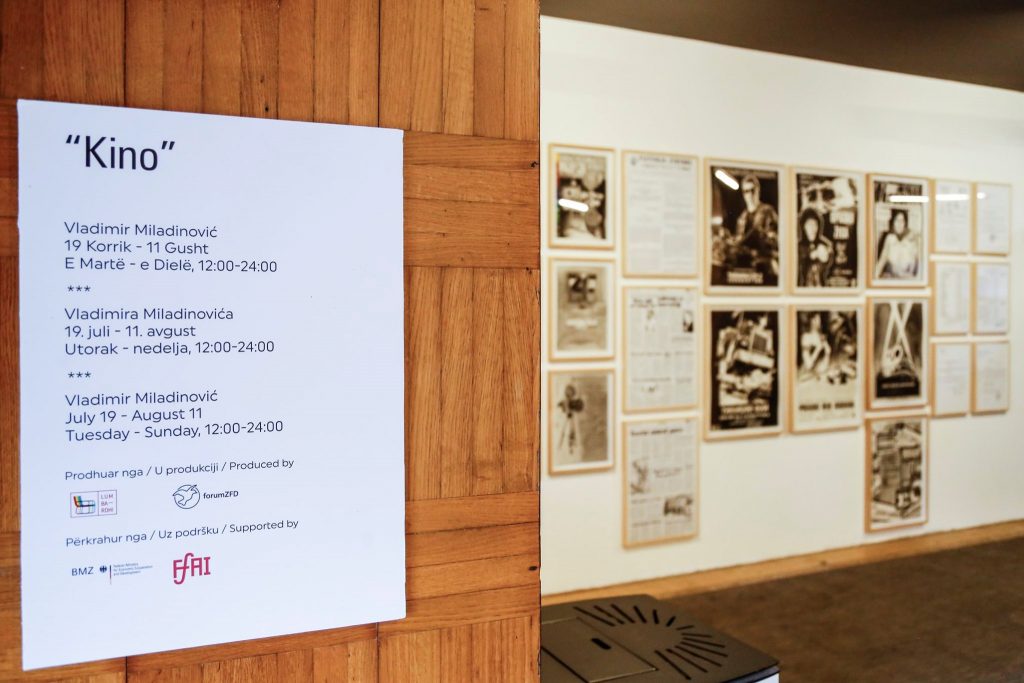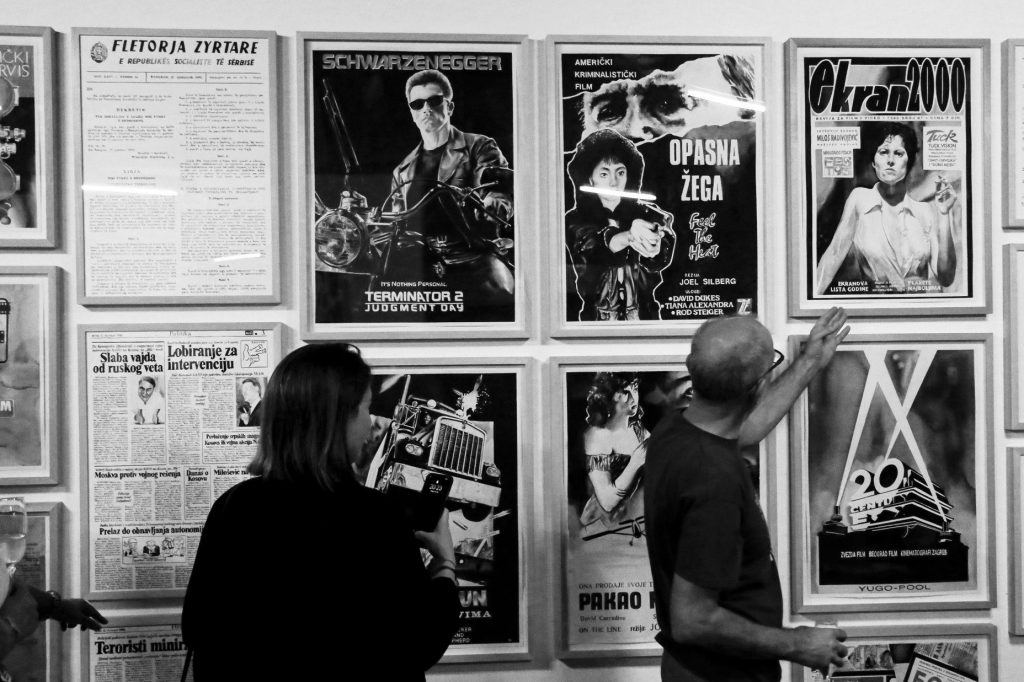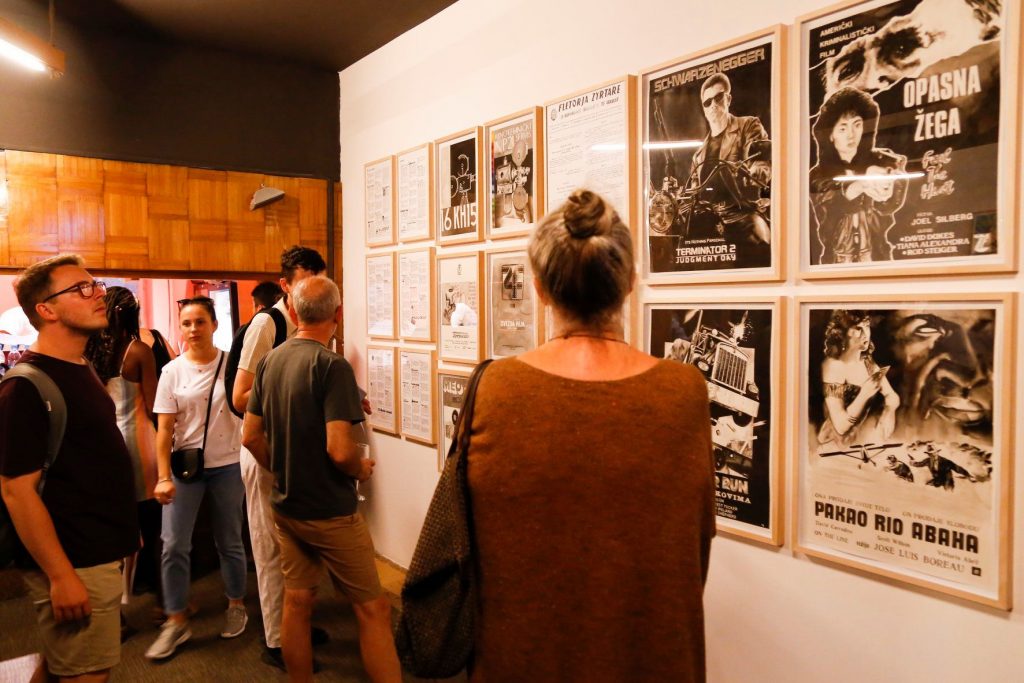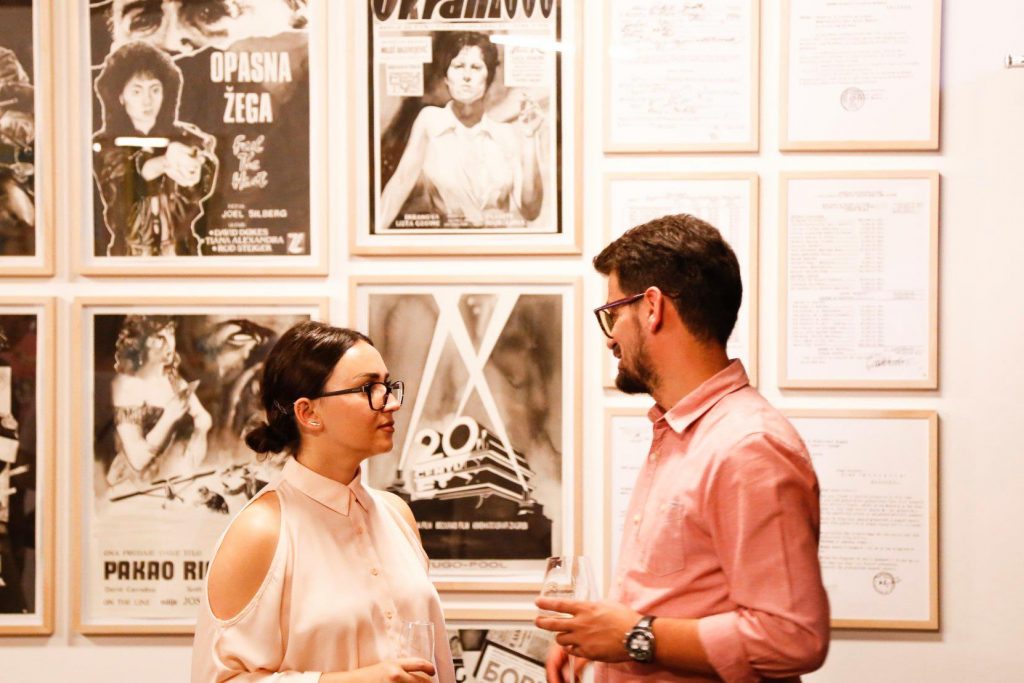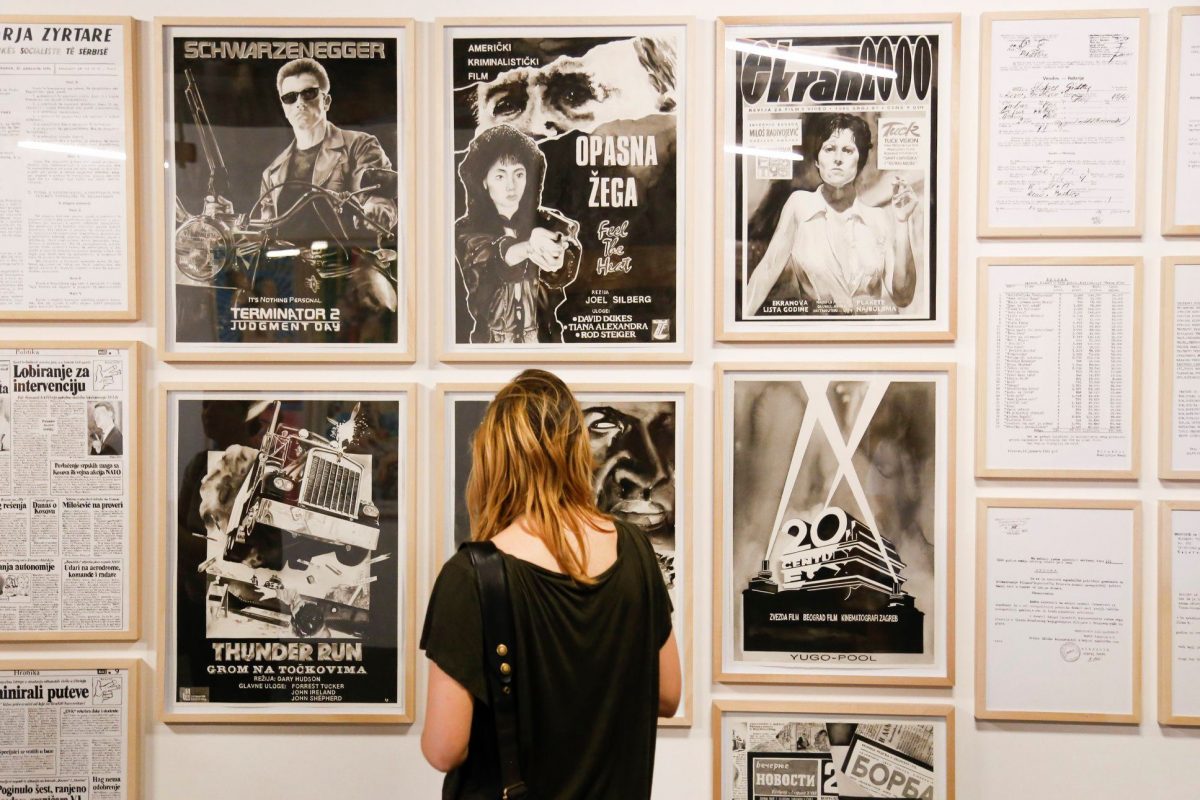Between 19th of July – 11th of August, 2019, Vladimir Miladinović, an artist based in Belgrade, made an exhibition called “Kino”, with the archival materials found at Lumbardhi Cinema. We interviewed him in September, 2020 as he spoke about his artistic practice and his experience during the production of “Kino”.
Can you tell us about your artistic and political formation?
After I finished high school of art, I decided to start studies at the faculty of applied arts where I became fascinated with byzantine wall paintings. I was always dreaming of becoming a painter, but very soon after I finished the faculty, I started with my PhD studies at the University of Arts in Belgrade. I can tell that this study helped me a lot to form my artistic views, not to see only through visual lenses but rather to think theoretically. This led me to a formation of a very strong political standpoint in art, which still is an important take in all steps of my production.
Your artistic practice extensively deals with archival materials and creates a “counter public sphere” to the official narrative of post-Yugoslav conflicts. With this political horizon in mind, you have re-actualised fragments from the archival documents by hand copy. Your work in “Four Faces of Omarska” is very impressive in this sense, since it mobilises a great deal of documents (newspaper clips, excavation logs, sketches) in order to show an often-repressed violent history. Can you tell us more about the research process of your works?
My engagement in the group Four Faces of Omarska (FFO) was extremely important for what will come later. I was working with extraordinary people and I had a chance to meet many people who committed their entire lives to certain engagements. This taught me to think politically, to be aware of the ethics of art. On the other side I was always fascinated with collecting, preserving and excavating old collections of documents, lists, maps, images etc. In parallel with my engagement in the FFO, I was leading my own investigation. I already had my personal archives with the material which later become key to some of my future works, which I am still developing. I started with the very basic material, such as an archive of old newspapers but later it developed to more serious court and state archives. Depending on the source material I am researching, the outcome is always different.
What is your relation with the technique of copy? What kind of possibilities does hand-copying open to the specific themes that you are dealing with? It seems there is a temporal tension in your works, as you could slow down the fast representation of quickly forgotten and repressed moments by your artistic elaboration.
The process of reading and researching was an important part of the work itself and I wanted to make the outcome of this process visible, so I started redrawing the material I was researching. If you read something that is often disturbing, you have difficulties and I felt like making this even more present, so I started slowly repeating the content, letter by letter, page by page, the entire content. There is a certain potential in the medium of drawing, in time of superfast production of digital content, that we cope to perceive. Drawing is almost as subversive as it could be. I created this simple technique. It contains transferring the exact material on paper, and then I draw with black ink and brush covering the traces of the copy. This is a very slow and meditative process. I spend hours in the studio working on one piece. Having in mind that the source material is often something that is highly negotiable or suppressed, you can tell that this is even more difficult sometimes, as you have to be inside that content a hundred percent or you make a mistake.
In 2016, you opened your first solo exhibition in Kosovo called “Drawing Rectification” as part of the Stacion – Center for Contemporary Art Prishtina annual exhibition program, based on bureaucratic documents, lists and other archival material around the Bajtajnica mass grave. Could you tell us more about the process of producing these works, the exhibition and the reception of it?
This exhibition was really important to me, but at the same time very difficult. It was my first single exhibition in Pristina and I was very anxious about everything. I had great support from Stacion – Center for Contemporary Art which, for the purposes of this exhibition, renovated this beautiful old boxing club. I was offered little help from a few institutions and we used this to build a really nice White Box inside this ruined interior, that is still in use I think, which makes this exhibition even more important.
The work I was showing originated from a series of my previous works, mostly connected with the archival research I did in The Hague tribunal archives. It was partly about the exhumations held in 2001 in Belgrade and I had a lot of work on this, but we also had some other works. Like the commercials about the state based banking system in the ‘90s which helped to steal money from people and lead the war in ex Yugoslavia.
Speaking of perception, I was intrigued that the public in Pristina had not much more knowledge about the Batajnica mass graves than people in Belgrade, for example. This was something I never expected. On the other side as I was already on the bus back to Belgrade, I received a call to present my experience at the Cultural Center REX in Belgrade. It was an exhaustion that lasted for over 6 hours. Everybody had something to say. I still don’t know what this discussion was about.
Last year you opened your exhibition called “Kino” in Lumbardhi and later in Kombank Dvorana, after a research in the archive of the cinema. The exhibition presented a fragmented and multi-layered constellation from the Lumbardhi archive. Can you tell us more about the research process and the exhibition in Prizren and in Belgrade? What are your opinions about the politics of this multi-layered history that is full of common but also harsh episodes? Can you tell us about the reception of the exhibitions?
“Kino” was maybe one of my best experiences so far. I think it is because I had real friends and colleagues as partners on this project, there was mutual trust and everything went beautifully from the very beginning. Everything started when Ares from Lumbardhi foundation called me one day to ask if I would be interested to look at the archive of the cinema, which I accepted immediately.
The history of this cinema tells a lot about the history of Yugoslavia and how this process of dissolution went through years. Also when you observe the material you can tell about the background of the cultural politics and relations between states. It was a real journey in the past, I really enjoyed it. Also worth mentioning is this very rich visual content of the archive. Among lots of bureaucratic documents, I’ve found lots of movie posters from the ‘70s, ‘80s and 1990s. It worked perfectly with the boring lists of sold tickets in the ‘60s for example.
We had the first show in the very space of Lumbardhi cinema in Prizren and it worked as if it was always there. Later the exhibition traveled to Belgrade and we managed to show this in the hall of Dom Sindicata, which is an old Union House, now named after a bank from Belgrade. These two shows in my opinion showed perfectly the multilayered history, the rich history of cinematography in Yugoslavia, from a small local cinema, deep in the south all the way to one of the most powerful Union Houses in the state back at the time.
Your ongoing exhibition in Belgrade reproduces the war diary of Ratko Mladic. Can you tell us about this exhibition a bit? What are the local and international reactions to this work?
The exhibition was just closed last week after two months of being open, with a presentation of a long awaited art-book and now is the time to collect the impressions, but definitely this made an impact and there were lots of reactions, from home and abroad. I was working for a long time to create this series and it was really nice to finally see it all framed on the gallery walls. This was supported by the Belgrade based office of Forum ZFD which supported me for a long time and it was presented in Eugster||Belgrade, a gallery I am working closely with during the last period. The exhibition as you know contained a series of 400 drawings, all handmade in ink on paper and framed in single wooden frames, creating a kind of never-ending installation that occupies the entire space of the gallery. The exhibition is now dismantled but we made an art-book which contains reproductions of all 400 drawings.
